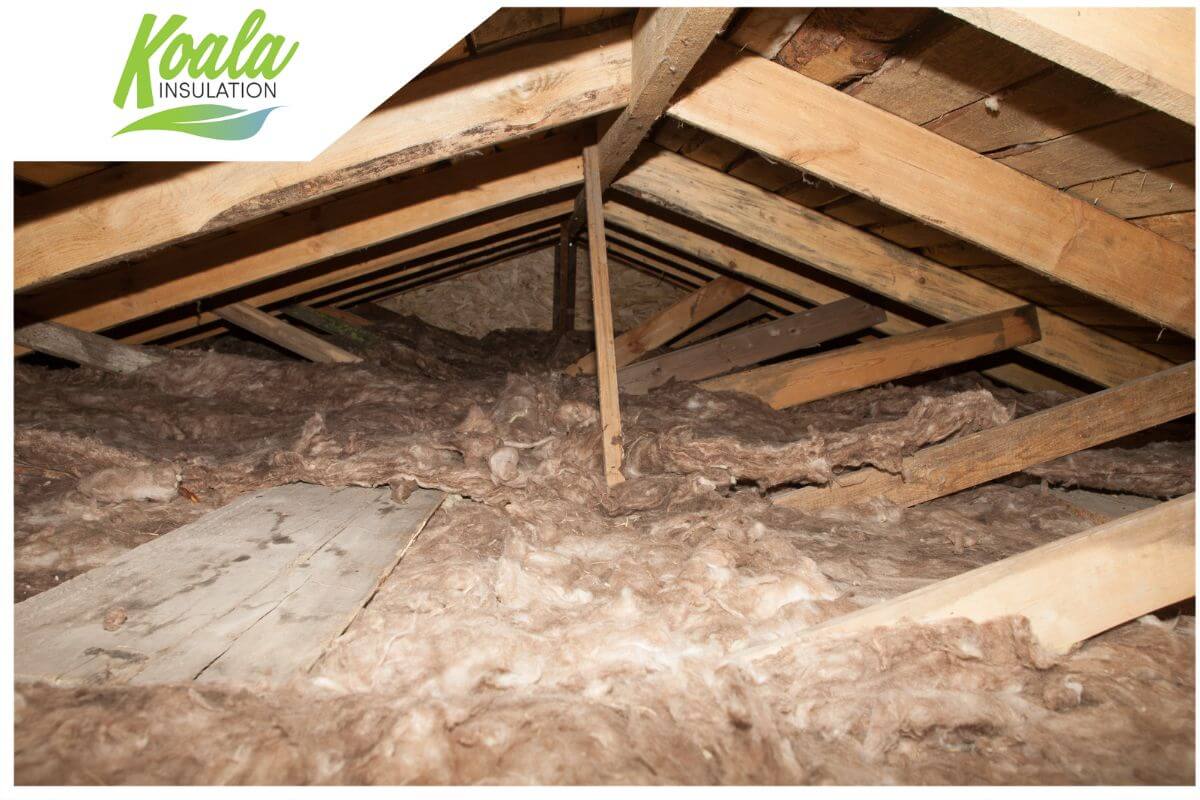How Can Old Insulation Damage Your Home and Increase Expenses?


Understanding how old and deteriorated insulation impacts your environment can not only improve the comfort and safety of your home but also increase your savings. The insulation material throughout your house gradually deteriorates over time, which means it needs to be regularly evaluated and replaced. This helps to reduce potential health risks, uncomfortable temperatures, and higher energy costs.
Health Risks
- Indoor Air Quality
Insulation and air sealing help protect your home from outdoor pollutants like allergens, dust, bacteria, etc. When you have unsealed cracks and holes throughout your building envelope or deteriorated material around the house, you increase the risk of developing health hazards like respiratory irritation, allergic reactions, and other illnesses. This is especially important to consider if anyone within the household has conditions like asthma. These materials need to be regularly evaluated and maintained in order to make sure your insulation and air sealing are able to prevent the entrance of this debris and maintain efficient indoor air quality.
- Moisture and Mold
Insulation that has been damaged by water and moisture from leaks, gaps, and poor air sealing can significantly increase the risk of mold growth in your home. If there’s been notable damage from problems like severe weather, there may also be hidden water damage when you don’t regularly inspect and remove the material. Additionally, if homeowners attempt to install their own insulation as a DIY project, many don’t properly inspect and clean the area. This leads to trapped moisture beneath the newly installed material and can hide the beginnings of mold growth, rot, and even wood warp.
- Humidity
In addition to water damaging the structure of your home, moisture that is trapped by insulation material can also increase the humidity within the house. When the older material is exposed to leaks and condensation, it can be contributing to uncomfortable moisture levels. The moist air is what creates a perfect environment for bacteria and viruses to grow, as well as increasing the risk of mold growth in other areas of your home. If the humidity begins to affect the building envelope of the house, any deteriorated or damp wood could also attract pests like carpenter ants, termites, and other foundation damaging insects.
Higher Costs
- Material Removal
If you haven't had the insulation in your home evaluated, you may not be aware of dangerous materials such as asbestos throughout the home. Asbestos was a commonly used insulation material until the 1980s when research about its harmful effects was released. Asbestos particles are toxic dust that contributes to a number of health risks, primarily the development of mesothelioma.
While not as toxic with long-term health risks, old fiberglass insulation can also release particles when disturbed. Since fiberglass is made from molten glass that’s spun into tiny fibers, these particles can irritate skin, eyes, and the throat if inhaled. If you’re unsure about what kind of material you have installed in your home or when it was last updated, contact your local professionals for an experienced evaluation. If it’s left for too long, removing and replacing this material can cost more due to safety precautions in addition to potential health risks and costs.
- Climate Control
One of the most important contributions of updated insulation and air sealing to your home is regulating temperature. This helps to improve climate control by reducing the rate of heat transfer, which is the ability of heat to enter and exit a structure. When you have deteriorated, damaged, or improperly installed material, your insulation is much less effective against unwanted heat loss or gain. This means your HVAC system needs to run more often to make up for uncomfortable temperatures, significantly raising your energy costs – especially in extreme weather! If you start to notice drafts, cold spots, or one area of the home that won't stay the same temperature as the rest of the house, call an insulation expert before your bills start to take a hit.
- HVAC Maintenance
When your HVAC system doesn't have adequate support from effectively installed insulation and quality air sealing, the unit will end up running constantly. As previously mentioned, the system needs to kick on more often in an effort to maintain the desired temperature on the thermostat. Old material in your home allows unwanted heat to enter in the summer and desired warmth to escape in the winter. Throughout the year, the HVAC unit becomes overworked to make up for the lost heat or conditioned air from the lack of a sufficient barrier. While your heating and cooling bills will start to climb, this could also lead to an increase in maintenance fees. Your HVAC system will most likely need to be repaired more often and, because of extreme weather, may even need to be replaced sooner than you expected.
How Can I Remove Old Insulation?
Removing old insulation is not only important for the comfort and safety of your home, but it can also improve your potential savings. While you don’t need to turn into your neighborhood’s insulation expert, understanding the impact that insulation can have on your environment can significantly influence your decisions. Our teams at Koala Insulation are dedicated to bringing our communities cost-effective and environmentally friendly solutions.
One of the ways we work to help our neighbors is by providing free evaluations. Our inspections help break down the current condition of the home's insulation and air sealing, identifying pain points and targeting potential future reinstallation needs. With this information, you and your household can make informed decisions that additionally take into account your current schedule and budget. Contact your local Koala Insulation team today to schedule your free evaluation and learn more about how you can improve your environment with updated insulation and air sealing.
Find Your Location


Get a quote



